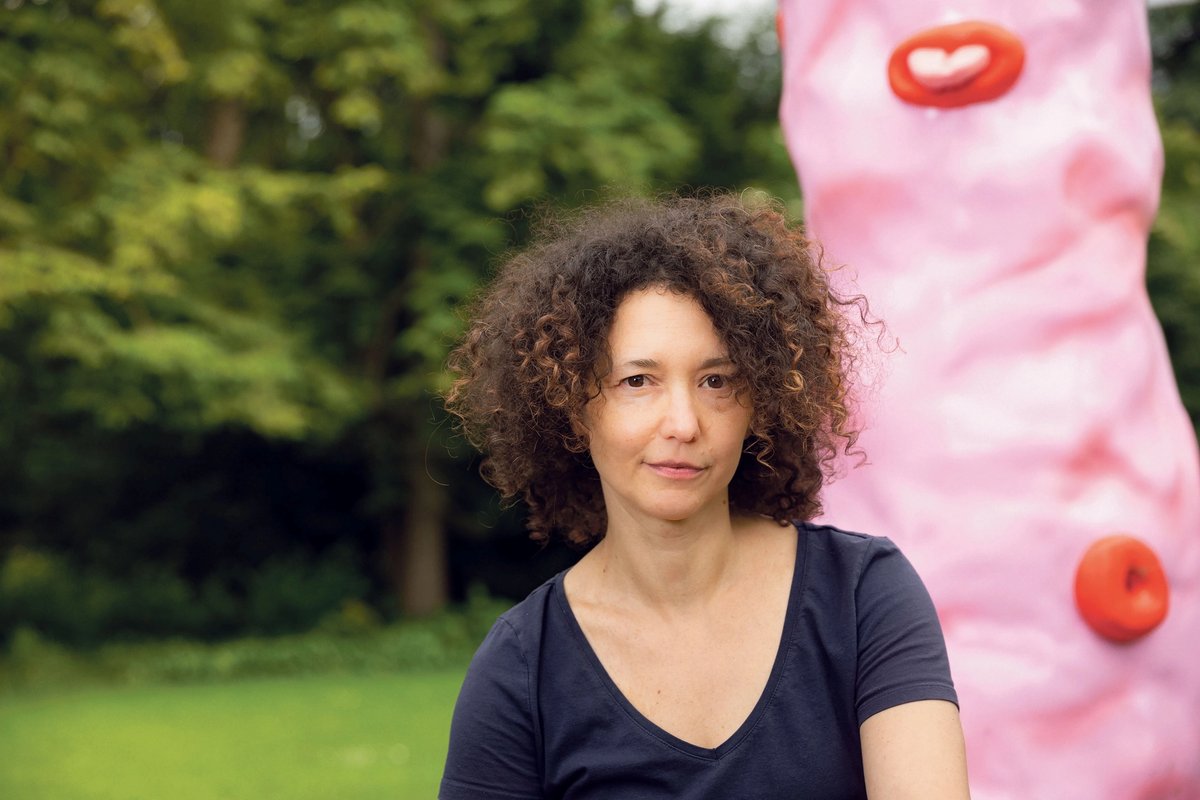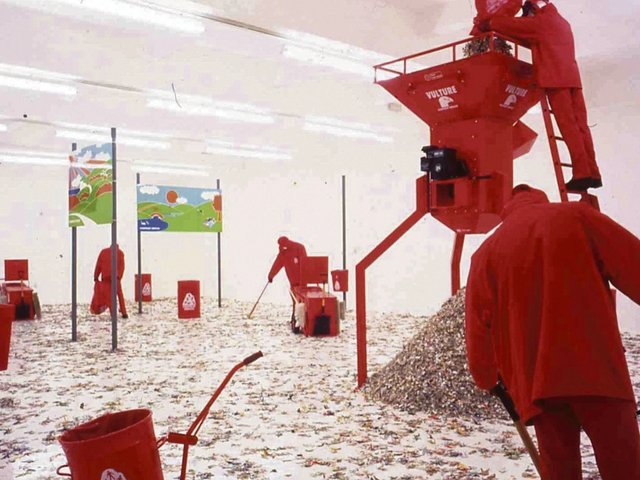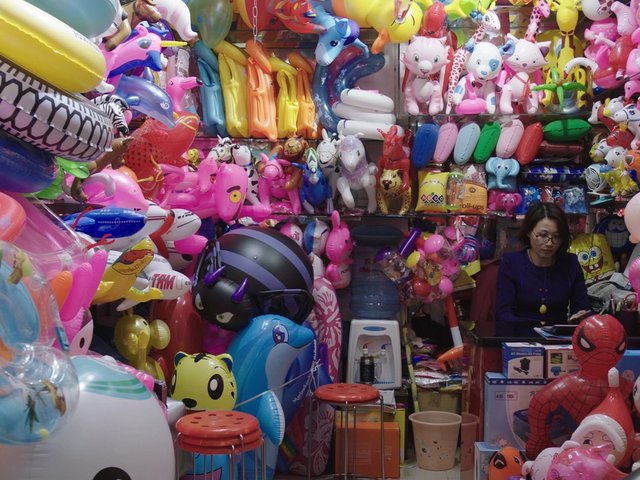To spend time with a Mika Rottenberg work is to feel it on your tongue and in between bare toes. Things drip and squish and squirm and tinkle. There is tinsel, pollen and shattered glass, manicured fingers emerging from walls, disembodied feet wriggling upside down in baskets of pearls. Tiny besuited men lie on plates and people sneeze, a lot.
Over the past two decades, the Argentinian-born, New York-based artist has used film, sculpture, drawing and installation to explore different systems—of production and exploitation—through absurd imagery. Rottenberg talks about “social Surrealism”. Others have called her work “serious silliness”. And it has consistently been a highlight at international exhibitions, including the 2019 Istanbul Biennale, the 2017 Skulptur Projekte Münster and the Venice Biennale in 2015.
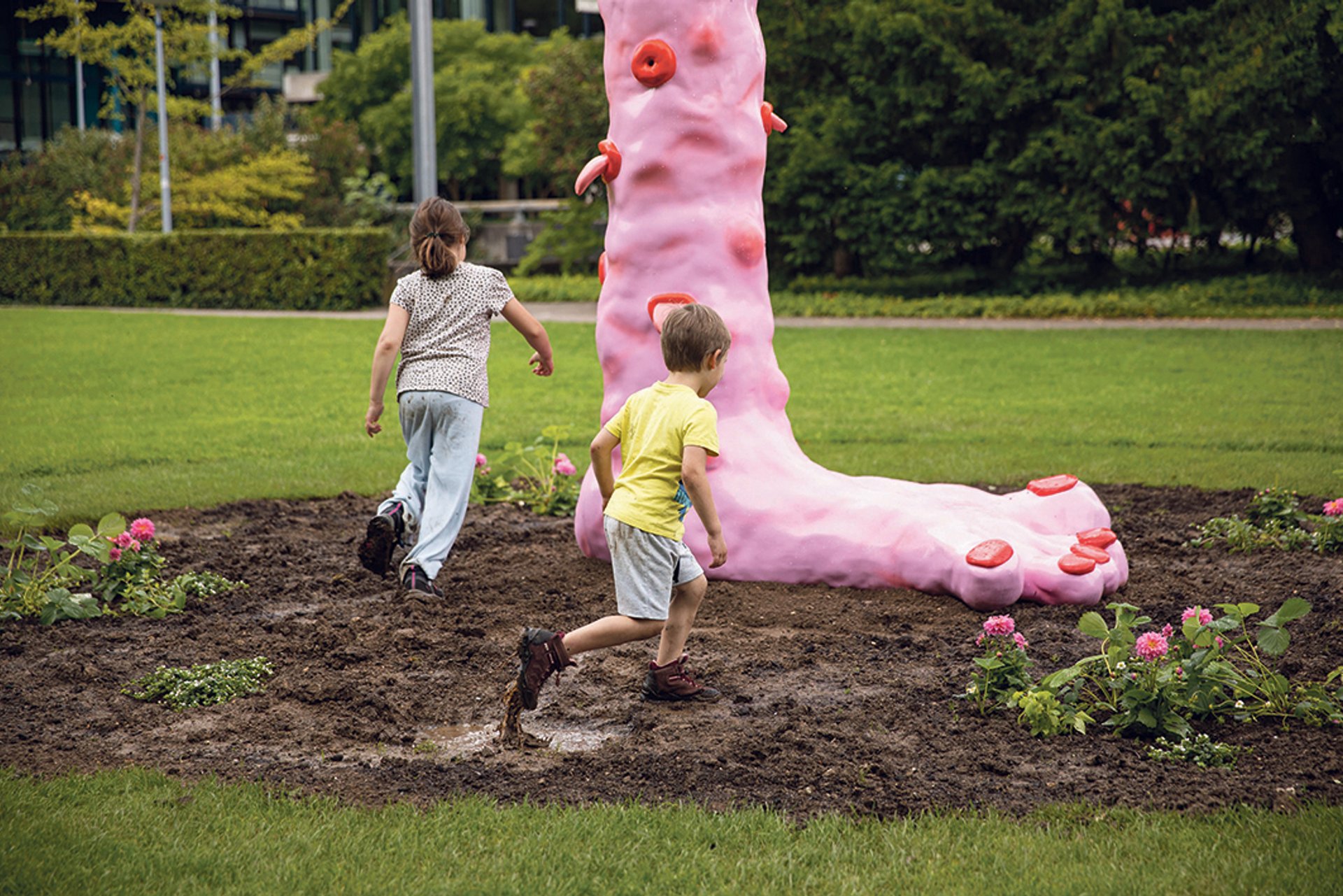
The 3m-high Foot Fountain (pink) (2024) has been specially made for the show at Museum Tinguely Photo: Matthias Willi, 2024 Museum Tinguely, Basel; © Mika Rottenberg; Courtesy the artist and Hauser & Wirth
For the largest retrospective of her work to date, titled Antimatter Factory, at Museum Tinguely, Rottenberg has brought together several films, a series of hybrid kinetic sculptures and lamp sculptures that pair bittersweet vines from upstate New York woodlands, where her studio is, with discarded plastic waste. Outside, meanwhile, she is unveiling a new fountain work.
The Art Newspaper: The show’s title, Antimatter Factory, references your time spent as artist-in-residence at Cern, the European Organisation for Nuclear Research. Given how tactile your work is, I was wondering where language sits within it. Do words come first? Or is language the last thing you get to?
Mika Rottenberg: Yes, my work is so non-verbal. For titles of individual works, often I don’t have to think about them; they just appear, at some point, and they fit. If I do have to think about it, it’s a problem. Sequential logic is maybe not my strongest point; I need to feel things. Antimatter Factory, as the title for the whole show, was the curator Roland Wetzel’s suggestion. It is the name of an experiment at Cern. It literally says that on a cool blue sign outside one of the buildings, which I thought was very funny.
What was it about Cern that was particularly intriguing for you?
My earlier works were about exploring things from a more sociopolitical perspective. How is this product made? Who touched it? Whose life is encased within it?
When I started working on Spaghetti Blockchain, in 2019, I was thinking about materialism as both the branch of philosophical enquiry and also the more direct capitalist critique of someone, or a society, being materialistic. I wanted to explore matter itself. Particle physics is an actual investigation into matter, so I ended up at Cern.
The film weaves together footage shot at other places, too, including an ASMR [autonomous sensory meridian response; a tingling sensation usually brought on by audio or visual stimuli] factory that I created in the studio; that’s all about how mediated matter triggers our bodies. It’s weirdly tactile and anti-tactile because it’s disembodied. There’s also footage of female throat singers from Tuva in Siberia, a Bitcoin mine and a potato farm. I mixed all these things into a salad that wants to mess with the viewers’ attention and senses and create unexpected combinations and meanings.
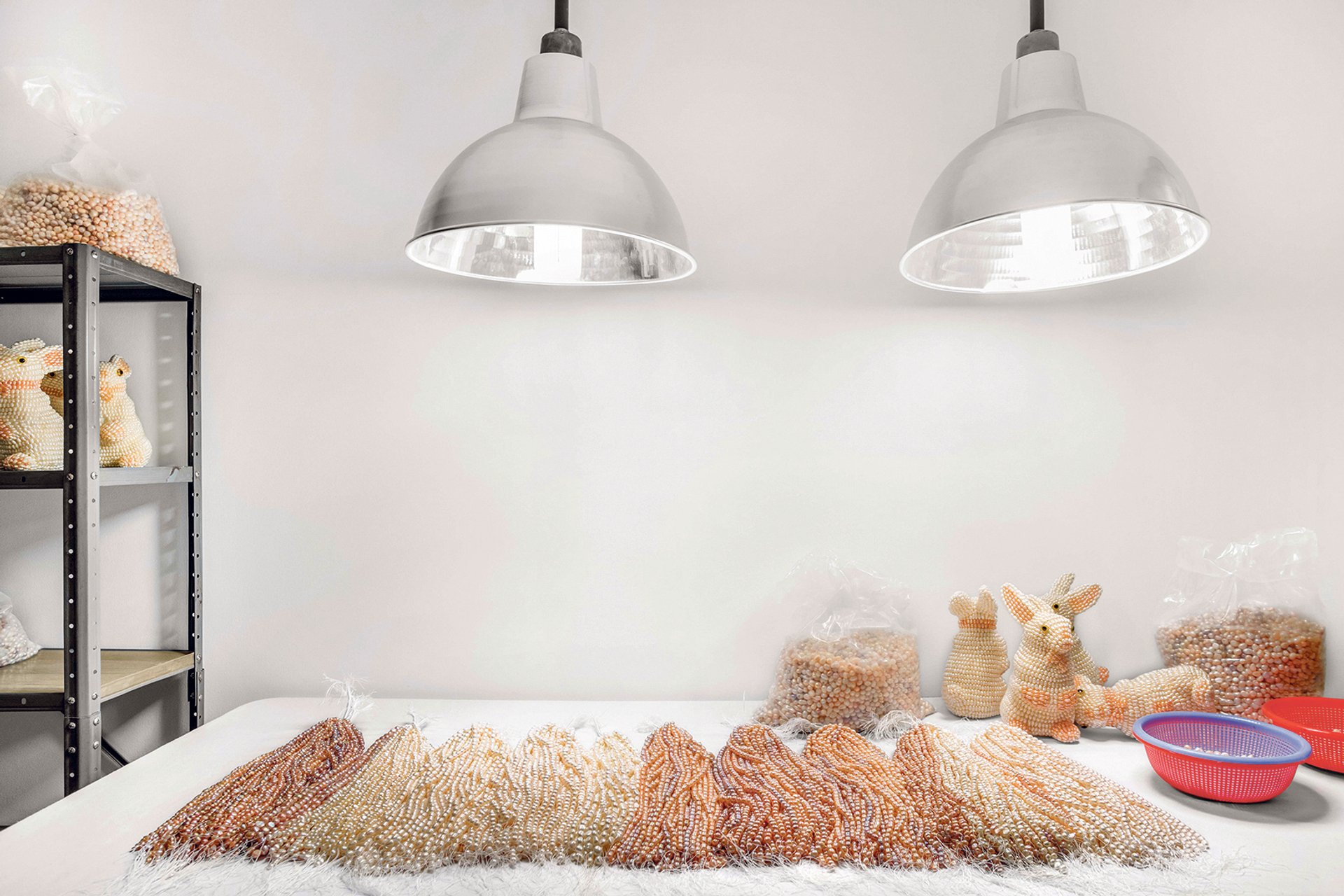
The video installation NoNoseKnows (2015), first shown at the 2015 Venice Biennale, explores the process of industrial pearl production in China Courtesy Museum Tinguely
How important was scale in this work?
When the Large Hadron Collider at Cern was built, it was the biggest machine ever made, yet it was made to find the smallest particle—the Higgs boson—ever discovered. I was also thinking about all of our reactions and bodily processes, and how each cell is like a little universe. So often, giant things—or things that feel giant—are triggered by imperceptibly tiny chemical reactions.
In other works, like Cosmic Generator or NoNoseKnows, I’ve given the viewer a kind of map, describing a place, creating a fictional journey. Here, I wanted the site of the work to be within the viewer and their reaction.
Has the connection with the Swiss kinetic sculptor Jean Tinguely been meaningful to you?
I never really respond directly to other artists but rather to whatever I think they are inspired by. With Tinguely, I feel more kinship than inspiration. I think maybe he and I are looking at similar things. There are so many links: the exploding machines, the obsession with movement and gears and industry.
The title for the show, Antimatter Factory, is the name of an experiment at Cern. It literally says that on a sign outside one of the buildings, which I thought was very funny
These kinetic sculptures came naturally, because there have always been so many body parts—hair, nails, lips—in my work. I designed them to be manually cranked. Contemporary technology is hard to understand. You press a button and that triggers a million movements. But early mechanisation was about amplifying one movement into, say, ten movements. I like how that can be a way to map things.
What does a material or a process need to have to grab your eye?
‘Pure’ is a word I try to avoid, but in this context I can use it. I think I’m after a pure sensory reaction to the world, an almost pre-verbal response. It also needs to contain some kind of internal conflict, like any good story. The materials I opt for often tell a story, too—one that can branch out and have a lot of meanings within it. The pearl in NoNoseKnows is this beautiful gem that is also an excretion. It is both natural and artificial, and, through this cultural system, it acquires great economic value.
What did the new outdoor fountain piece come out of?
This creature, which resembles a pink cut-off foot, has been in my drawings for a long time. I first made a small sculpture, but the result did not feel complex enough. Driving to my studio in upstate New York, I started noticing the agricultural equipment, the farming, things growing.
Often, fountains are just these beautiful objects plopped on to the grass somewhere. I wanted to make something that would be more intimately connected with the earth and nurture the place where it sits. So, I made the foot creature much bigger; it stands 3m tall and has a sprinkler on its head. Were it to find a permanent home, in the summer the ground around it could be a mud garden for playing. In late summer, things could be planted around it.
• Mika Rottenberg: Antimatter Factory, Museum Tinguely, Basel, until 3 November


